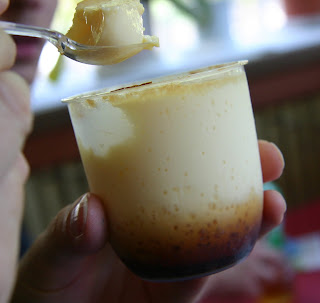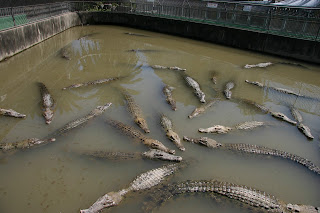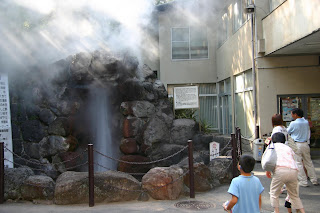This is still in Kumamoto, but I guess I'm hungry that's why I posted this noodle restaurant ad :)
(Use Quicktime if your media player doesn't show the movie)
This is still in Kumamoto, but I guess I'm hungry that's why I posted this noodle restaurant ad :)
(Use Quicktime if your media player doesn't show the movie)

And we really travelled with 300 km/h:



But in general they were well behaved:



 This pudding, a kind of crème brulée cooked by means of hot steam is famous, too:
This pudding, a kind of crème brulée cooked by means of hot steam is famous, too:



 Chinoike Jigoku , the "blood pond hell" features a pond of hot, red water:
Chinoike Jigoku , the "blood pond hell" features a pond of hot, red water:


Shiraike jigoku, the "white pond hell" got its name from its milky white water.

Oniishibozu jigoku is named after the mud bubbles, which emerge from boiling mud pools and look like the shaven heads of monks:

In oniyama jigoku crocodiles and alligators are bred and kept , hence it name 'monster mountain hell':

Tatsumaki jigoku, the "spout hell" features a boiling hot geyser, which erupts every 25-30 minutes for a couple of minutes:


Entrance to the castle innerds:
And a rare photo of myself:




and the habit of pulling the canines of some high-ranking individuals:







